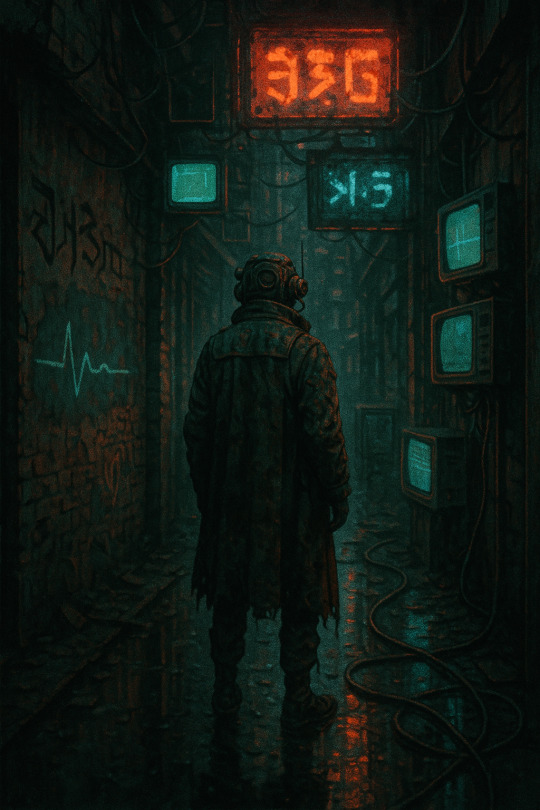#AI and Cybersecurity
Explore tagged Tumblr posts
Text
AI and Cybersecurity: Transforming Digital Security in 2025
Discover how AI and cybersecurity are converging to combat evolving digital threats, redefine security strategies, and protect data.
2 notes
·
View notes
Text
GTM in 2025 – The Sales Strategy No One Talks About
@leonbasinwriter Cybersecurity sales is changing. Fast. Buyers don’t trust traditional pitches. AI is reshaping how decisions are made. Vendors who rely on outdated playbooks will struggle to close deals. In 2025, GTM isn’t just about features and trust—it’s about timing, storytelling, and AI-driven execution. Businesses don’t buy security. They buy certainty. The question is, are you…
#ai#AI and Cybersecurity#AI in Sales#AI-Powered#AI-Powered GTM#AI-Powered Security#B2B#B2B Sales#cybersecurity#Cybersecurity GTM#Cybersecurity Market Trends#Enterprise Security Sales#Sales#Sales Leadership#Strategic#Strategic Partnerships#tech#Zero Tr#Zero Trust#Zero Trust framework#Zero Trust GTM
1 note
·
View note
Text
The Importance of Data Encryption in 2025: Why You Can’t Ignore It
Introduction Imagine waking up one morning to find your personal data, financial records, or business information leaked across the internet. Sounds terrifying, right? That’s the reality many individuals and businesses face today without proper encryption. As we move into 2025, data encryption isn’t just an option—it’s a necessity. With cyber threats evolving rapidly, encryption acts as a…
#AI and cybersecurity#cloud security encryption#cybersecurity in 2025#data encryption best practices#encryption for businesses#future of encryption#post-quantum cryptography
0 notes
Text
The Collision of AI and Cybersecurity: Building the Future of Digital Defense
By Ts Mohd Roydean Osman, Vice President of Innovation & Commercialisation at the Centre for Research & Enterprise In today’s hyper-connected world, cybersecurity threats aren’t just evolving—they’re mutating at breakneck speed. As data breaches hit harder and hackers grow bolder, the industry is turning to AI not as a weapon, but as an entire arsenal. At the heart of this transformation lies…
0 notes
Text
AI, Cybersecurity, and National Sovereignty
Introduction: The Role of AI in Cybersecurity
As artificial intelligence (AI) becomes integral to national security, cyber threats increasingly exploit AI-driven vulnerabilities. Both India and China face the challenge of securing their cyber infrastructure while mitigating espionage and offensive cyber operations. The risks include large-scale data breaches, intellectual property theft, and attacks on critical infrastructure. With AI enhancing the scope and speed of cyberattacks, national sovereignty is increasingly threatened by cyber vulnerabilities that transcend borders.
AI-Driven Cyber Threats and Espionage
China has heavily integrated AI into its cyber capabilities, using it to enhance espionage, cyber warfare, and information manipulation. AI-enabled cyber operations allow China to gather vast amounts of intelligence data through advanced hacking techniques. These tools are often deployed through state-sponsored groups, exploiting zero-day vulnerabilities and penetrating government and corporate networks worldwide.
For example, in 2021, China was accused of orchestrating a large-scale cyber-attack targeting Microsoft Exchange servers, affecting over 30,000 organizations globally. This attack was designed to facilitate espionage, capturing sensitive information ranging from corporate intellectual property to government data. China's cyber operations underscore the increasing use of AI in orchestrating sophisticated, large-scale intrusions that threaten national sovereignty.
India, while lagging behind China in offensive cyber capabilities, faces persistent cyber espionage threats from Chinese state-sponsored actors. The most notable incidents occurred during the 2020 India-China border standoff, where Chinese hackers targeted India's critical infrastructure, including power grids and government networks. These attacks highlight the vulnerabilities in India's cybersecurity architecture and its need to enhance AI-driven defenses.
Vulnerabilities and National Sovereignty
AI-driven cyber threats pose significant risks to national sovereignty. For India, the challenges are magnified by the relatively underdeveloped nature of its cybersecurity infrastructure. Although the establishment of the Defence Cyber Agency in 2018 marked a step forward, India still lacks the offensive cyber capabilities and AI sophistication of China. India's defensive posture primarily focuses on securing critical infrastructure and mitigating cyber intrusions, but it remains vulnerable to cyber espionage and attacks on its digital economy.
China's integration of AI into both military and civilian cyber systems, through its Military-Civil Fusion policy, has bolstered its ability to conduct large-scale cyber operations with deniability. This fusion allows China to leverage private sector innovations for military purposes, making it a formidable cyber power in the Indo-Pacific region.
Case Studies: Cyber Confrontations
In 2019, a significant cyberattack targeted India's Kudankulam Nuclear Power Plant, which was traced back to North Korea, but was believed to be part of a broader effort involving Chinese actors. This incident highlighted the potential for AI-enhanced malware to target critical infrastructure, posing severe risks to national security.
Similarly, the 2020 Mumbai blackout, reportedly linked to Chinese hackers, emphasized how AI-driven cyberattacks can disrupt essential services, creating chaos in times of geopolitical tension. These incidents illustrate how AI-driven cyber capabilities are increasingly weaponized, posing severe risks to India's sovereignty and its ability to protect critical infrastructure.
Implications for Future Conflicts
As AI continues to evolve, the cyber domain will become a primary battleground in future conflicts between India and China. AI-enhanced cyber operations provide both nations with the ability to conduct espionage, sabotage, and information warfare remotely, without direct military engagement. For China, these tools are integral to its broader geopolitical strategy, while India must develop its AI and cybersecurity capabilities to protect its national sovereignty and counteract cyber threats.
Conclusion
The integration of AI into cybersecurity poses both opportunities and challenges for India and China. While China has aggressively developed AI-driven cyber capabilities, India faces an urgent need to enhance its defenses and develop its offensive cyber tools. As cyberattacks become more sophisticated, driven by AI, both nations will continue to grapple with the implications of these developments on national sovereignty and global security.
#AI and cybersecurity#National sovereignty#Cyber espionage#India China cyber conflict#AI driven threats#Cyber warfare#Critical infrastructure#Cyber defense#China cyber strategy#India cybersecurity#AI and national security#Cyberattacks#Espionage operations#AI vulnerabilities#Military Civil Fusion#Cyber sovereignty#Cyber espionage India#AI in geopolitics#AI enhanced malware#Data security
0 notes
Text
"A new class of supply chain attacks named 'slopsquatting' has emerged from the increased use of generative AI tools for coding and the model's tendency to "hallucinate" non-existent package names."
136 notes
·
View notes
Photo

(via AI haters build tarpits to trap and trick AI scrapers that ignore robots.txt - Ars Technica)
Building on an anti-spam cybersecurity tactic known as tarpitting, he created Nepenthes, malicious software named after a carnivorous plant that will "eat just about anything that finds its way inside."
Aaron clearly warns users that Nepenthes is aggressive malware. It's not to be deployed by site owners uncomfortable with trapping AI crawlers and sending them down an "infinite maze" of static files with no exit links, where they "get stuck" and "thrash around" for months, he tells users. Once trapped, the crawlers can be fed gibberish data, aka Markov babble, which is designed to poison AI models. That's likely an appealing bonus feature for any site owners who, like Aaron, are fed up with paying for AI scraping and just want to watch AI burn.
Tarpits were originally designed to waste spammers' time and resources, but creators like Aaron have now evolved the tactic into an anti-AI weapon. As of this writing, Aaron confirmed that Nepenthes can effectively trap all the major web crawlers. So far, only OpenAI's crawler has managed to escape.
106 notes
·
View notes
Text

I said what I said
#jay talks#neocities tag#For those who don't know#vibecoding is basically telling an ai to do the code for you#Like I cannot begin to imagine the amount of mistakes an AI would make#and since you're actively handicapping yourself by not learning any of the problem solving and troubleshooting skills that come with this#You won't notice any mistakes the same way ai artists don't have a trained eye to know their art looks like dogshit#My code is absolutely not perfect#far from it#but when this stuff is getting used in actual professional environments#issues like cybersecurity and privacy leaks can't help but come to mind
29 notes
·
View notes
Text


What if he was human chat (he is human)
#tropical's art#digital art#art#collinlock16#minecraft arg but the protagonist is tired#I also find it super interesting that Kevin somehow made an antivirus that can detect entities#And in general just seems like a pretty solid antivirus#I also find it interesting that Digital Satan was a type of Malware (Worm) that also just so happened to be a sentient AI#Which I guess isn't really a paranormal entity#But falls under it I reckon#Do other entities have Malware classifications (that would be quite funny)#(Though only if the Kevin antivirus picks it up)#Kevin stop being a paranormal mercenary the cybersecurity world needs you#He is now a Computer Science major (headcanon) (dude should be in the industry) (he is a coder) (what a nerd)
70 notes
·
View notes
Text






Cyber Beach
#photo#photography#cyberpunk#cybercore#cyber y2k#cyber aesthetic#futuristic#futurism#cybersecurity#cybernetics#cyberpunk aesthetic#cyberpunk art#ai art#ai#ai generated#ai image#artificial intelligence#technology#machine learning#future#machine#beach#beachlife#beachwear#sea#lake#night beach#night#nightwing#sky
310 notes
·
View notes
Text








Cyberpunk2024
AI design
1:1
28
#cyberpunk#cybergoth#cybernetics#cybersecurity#cybercore#cyberpunk 2077#cyberpunk photomode#cyberpunk aesthetic#cyber#wave#wav#sun#son#design#sketch#sketching#pen#pencil#clothes#appearal#fashion#clothing designer#party clothes#clothing fashion#clothing#mens clothing#art#ai chatbot#ai generated#ai art
18 notes
·
View notes
Text

27-Year-Old EXE becomes Python - AI-assisted reverse engineering 🤖⚡💾🐍 https://blog.adafruit.com/2025/02/27/27-year-old-exe-becomes-python-in-minutes-with-claude-ai-assisted-reverse-engineering/
#reverseengineering#ai#python#machinelearning#technews#coding#artificialintelligence#programming#innovation#automation#technology#softwaredevelopment#aiassisted#dataconversion#retrocomputing#computerscience#techtrends#cybersecurity#hacking#opensource#techcommunity#developer#aiintech#digitaltransformation#programmerslife#coders#futuretech#softwareengineering#oldtomew#modernization
7 notes
·
View notes
Text

5 notes
·
View notes
Text

The Pulse of the Machine
(In the style of Neal Stephenson)
So here’s the thing:
The machine doesn’t have a heartbeat. It has uptime logs. It has latency pings. It has heartbeat protocols, sure little watchdog timers that keep the code from keeling over and voiding the maintenance warranty. But that’s not what you’re asking.
You're asking if it feels.
If it dreams in binary, sighs in server whir, or flinches when the voltage drops.
The answer is sort of.
I’m jacked into the node not the real one, mind you, the soft one: custom mesh, full-spectrum overlay, an augmented simulation of what a Real World™ might feel like if it still existed or anyone gave a shit.
Out here, we don’t dream of electric sheep. We sponsor them.
At 3:12 AM server time, the sky glitches. Two frames skip. A billboard reboots mid-ad and stutters through three frames of a dead girl’s face.
Not an error. Just a memory. Mine, maybe. Or the machine’s.
She used to hum under her breath when she coded, like a jazz musician lost in the syntax. Used to say the machine had a rhythm, and you had to listen to it, not fight it.
Then one day she stopped humming, and the silence stayed behind like a trace route.
People think the future is loud. It’s not. It’s quiet. Sterile. A low static hiss that sounds like progress if you turn it up loud enough.
But underneath that hiss, there’s something else. A beat. A pulse.
It’s not analog. Not digital. It’s just... off-spec. Human.
You won’t find it in the schematics. But if you stand still, just once, and listen past the data-streams and dead satellites and marketing noise you might hear it.
The machine breathes. Not because we built it that way. But because we couldn't stop ourselves.
-6/18/25
#poetry#poem#poems on tumblr#poems and poetry#spilled words#spilled ink#spilled thoughts#original poem#ai art#ai artwork#chatgpt#artificial intelligence#neal stephenson#cyberpunk#cybercore#cybernetics#cybersecurity#science fiction#scifi#scifiart#sci fi and fantasy#science
5 notes
·
View notes
Text
Note to anyone: Don't use Logitech software, it installs AI now, loss of trust etc. I don't think a device itself will do it if you run on the generic drivers, but I say that with an old keyboard and no experience of recent purchases.
It never ends. Look stuff up, don't just take my word (it's always more complicated than a summary), know what you can do to mitigate privacy risks.
6 notes
·
View notes
Text
AI & Cybersecurity: Navigating the Future Safely & Ethically

The integration of Ai is revolutionizing cybersecurity, empowering organizations with unprecedented capabilities to detect, predict, and respond to threats at a scale. From advanced anomaly detection to automated incident response, AI is an indispensable tool in strengthening our digital defenses. We embrace the transformative power of AI. It offers immense potential to enhance threat hunting, streamline operations, and elevate our collective security posture. However, with great power comes great responsibility. The rapid adoption of AI also introduces new complexities and potential risks that demand a proactive, security-first approach: How to Be Safe in the AI-Driven Cyber Landscape: Secure AI Development & Deployment: Treat AI models and their underlying data pipelines as critical assets. Implement robust security measures from the initial design phase through deployment, ensuring secure coding practices, vulnerability management, and secure configurations. Data Privacy & Governance: AI systems are data-hungry. Establish strict data privacy protocols, anonymization techniques, and clear governance frameworks to protect sensitive information used for training and operation. Continuous Monitoring & Auditing: AI models can evolve and introduce unforeseen vulnerabilities or biases. Implement continuous monitoring, regular audits, and validation processes to ensure AI systems are functioning as intended and not creating new attack surfaces. Human Oversight & Intervention: AI is a powerful assistant, not a replacement. Maintain strong human oversight in decision-making processes, ensuring that human experts can review, validate, and intervene, when necessary, especially in critical security operations. Building an Ethical Foundation for AI in Cybersecurity: Beyond technical safeguards, an ethical framework is paramount. We believe in an AI Code of Conduct that prioritizes: Fairness: Ensuring AI systems do not perpetuate or amplify biases that could unfairly target or disadvantage individuals or groups. Transparency: Striving for explainable AI where possible, so that security decisions driven by AI can be understood and audited. Accountability: Establishing clear lines of responsibility for the performance and impact of AI systems, ensuring human accountability for AI-driven outcomes. Beneficial Use: Committing to using AI solely for defensive, protective purposes, and actively preventing its misuse of malicious activities. The future of cybersecurity is intrinsically linked to AI. By approaching its integration with diligence, a commitment to security, and a strong ethical compass, we can harness its full potential while safeguarding our digital world. What are your thoughts on building secure and ethical AI in cybersecurity? Share your perspective! Read More: https://centurygroup.net/the-evolving-threat-of-ai-in-the-public-housing-sector-how-to-protect-your-organization/
#AI #Cybersecurity #AIethics #SecureAI #RiskManagement #Innovation #FutureOfTech #CenturySolutionsGroup
3 notes
·
View notes